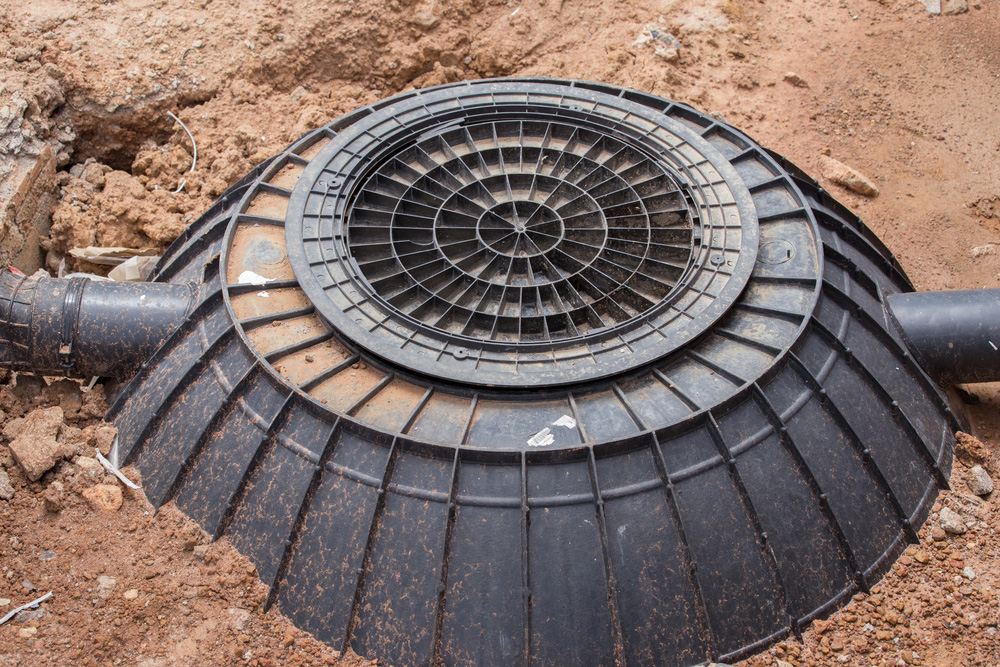
Owning a property with a septic system often means trusting that it is working as it should. Ignoring the early warning signs of a full septic tank can lead to costly, unpleasant problems that disrupt daily life. Learning how to tell if septic tank is full helps homeowners take action before a small issue becomes a major emergency. These are the 14 key signs to watch for.
Gurgling Sounds Coming From Plumbing Fixtures
Hearing strange gurgling noises from toilets, sinks, or drains is a classic warning. These sounds happen when air becomes trapped in the pipes because a full septic tank is not allowing wastewater to flow out correctly. The gurgling is a clear signal that something is blocking the normal wastewater flow.
This noise often indicates that the septic tank is approaching maximum capacity and needs immediate pumping. The air pushes back through the plumbing system, causing the bubbling sound you hear.
Foul Odors in the Yard or House
A strong, unpleasant smell in the yard or inside the house is one of the most common signs of septic trouble. The odor usually comes from wastewater and gases escaping through the drain field or household drains. It is often strongest near the septic tank or drain field area.
The smell occurs when the tank can no longer process new wastewater, causing waste to seep up into the yard or back into the home’s plumbing. Aside from being unpleasant, the odor may carry harmful bacteria and gases. Recognizing it quickly allows you to schedule a professional inspection before the situation worsens.
Water Pooling Around the Septic Tank Area
Standing water or soggy soil above the septic tank or drain field signals that the tank cannot accept new wastewater. The liquid is forced to the surface, saturating the ground.
This pooling water usually has a foul odor and a darker color, confirming that it is not rainwater. This is a clear indication of an overflowing tank or a drain field that cannot handle the wastewater volume. Immediate action helps prevent damage to both the property and the surrounding environment.
Sewage Backup in Toilets or Drains
Sewage backing up into toilets or household drains is one of the clearest and most urgent indicators of a full or failing septic tank. When the tank reaches maximum capacity, there is no remaining space for additional wastewater, forcing it to reverse course and flow back into sinks, tubs, and toilets inside the home.
This type of backup creates an unsanitary mess, produces unpleasant odors, and carries significant health risks for everyone in the household. Sewage contains harmful bacteria, pathogens, and contaminants that can spread quickly if not addressed.
This situation calls for immediate professional cleanup, thorough disinfection of affected areas, and emergency septic service to prevent further damage and protect your property.
Lush Green Grass Over the Septic Tank
It is common to notice a patch of unusually green and lush grass directly above the septic tank or drain field. This happens because wastewater from a full tank leaks into the soil, acting like a natural fertilizer for the grass. The grass absorbs excess nutrients from the overflowing tank, causing it to grow faster and appear greener than the rest of the lawn.
Although this might look like a healthy lawn, it actually signals a problem with the septic system. The increased grass growth indicates that the tank or drain field is leaking or struggling to handle the wastewater load. This subtle sign means the system likely needs to be pumped or repaired soon before more serious damage occurs.
Sudden Changes in Water Flow or Pressure
A sudden drop in water pressure or slow draining in sinks, showers, and tubs is another warning sign. This usually happens when the drain pipes leading to the septic tank are blocked or partially clogged by a tank that is nearly full. The backed-up tank creates pressure inside the plumbing, making it harder for water to drain freely.
If this issue is ignored, it can progress from a small inconvenience to a major problem. Slow drainage often leads to complete blockages or sewage backing up into the home. Any unexpected change in water flow should be treated as a sign that the septic system is nearing its limit.
High Water Levels in the Drain Field
Seeing soggy ground or standing water in the drain field, even during dry weather, points to a full or failing tank. When the soil becomes saturated with wastewater, it cannot properly absorb more liquid, leaving water sitting on the surface.
High water levels in the drain field mean the system is no longer processing wastewater effectively. This is a risk to both the property and the health of anyone nearby. Professional inspection is usually needed to restore proper function.
Unexplained Wet Spots in the Yard
Wet or spongy areas in the yard that have no connection to rain or sprinklers are another sign of trouble. These patches form when wastewater from a full septic tank or blocked drain field rises to the surface. The liquid moves through the soil along the path of least resistance and leaves behind soft or damp areas.
These wet spots often carry a foul odor, confirming that they are coming from the septic system. They are an indication that the system is overloaded and needs attention. Locating these patches helps identify the problem area that must be repaired.
Wastewater Backing Up into Sinks
Water or sewage backing up into sinks, particularly after flushing a toilet or running water elsewhere, signals a tank that cannot accept more liquid. The clogged system forces wastewater back into the house through the sink drains.
This is a very serious and unsanitary problem that must be handled immediately. Wastewater backups pose health risks and can damage your home. If this happens, the tank is at maximum capacity and needs urgent pumping.
Visible Scum or Sludge in the Tank
During an inspection, you might see a thick layer of scum floating at the top or a high level of sludge settled at the bottom of the tank.
This is a sign that the tank has not been pumped in a long time, allowing too much solid waste to build up. The scum layer is made of oils, fats, and other floating materials. On the other hand, the sludge consists of solids that settle at the bottom.
When scum and sludge take up too much space, there is little room left for incoming wastewater. This reduces the system’s efficiency and puts it at risk of overflowing. Checking these levels regularly helps you know when it is time for professional pumping
Reduced Water Flow in Showers or Tubs
Slow drainage from showers or tubs, or standing water left in the basin after use, is another warning sign. A full septic tank or blocked drain line creates backpressure, making it difficult for water to exit.
This reduced flow is often an early indicator of a bigger issue. If left unaddressed, it can turn into a complete clog and cause wastewater to back up into the house. Acting quickly helps prevent a larger mess and protects the plumbing system.
Overflowing or Wet Septic Tank Lid
Wet or muddy ground around the septic tank lid, or wastewater actually overflowing from the top, is one of the clearest signs of a major problem. This means the tank is completely full and has nowhere left to hold wastewater.
This situation is both a health and environmental hazard that requires immediate attention. An overflowing tank must be pumped right away to prevent contamination and property damage.
Unusually High Toilet Paper Usage
Frequent toilet clogs or difficulty flushing toilet paper and waste are also signs that the septic tank is too full. When the tank is overloaded, solid material backs up into the drain lines. Excess toilet paper worsens the problem by creating a solid mass that clogs the pipes.
Having to plunge toilets often is a direct indication that the system is under strain. Pumping the tank as soon as possible helps prevent more serious blockages.
Frequent Need for Pumping and Maintenance
If the septic tank needs pumping more often than normal for the household size and water usage, there may be a deeper issue. A clogged drain field, broken pipe, or improper use of the system could be causing it to fill faster than expected.
This pattern means the system is not functioning efficiently and needs a professional diagnosis. Identifying the root cause can restore the proper pumping schedule and prevent repeat problems.
Contact Miller Septic for Professional Services
You need fast and reliable septic solutions to protect your home and business from unexpected backups and costly repairs. We deliver professional septic tank pumping services in Fort Myers, FL for all of your system maintenance and emergency needs.
Trust Miller Septic to handle everything from routine pumping and inspections to major drain field repair and replacement. We are a fully licensed and certified company that prioritizes quality work and customer satisfaction.
Contact us for the most affordable septic services in Fort Myers, FL today. Our team stands ready to assist homeowners and businesses in Southwest Florida with 24/7 emergency support.

